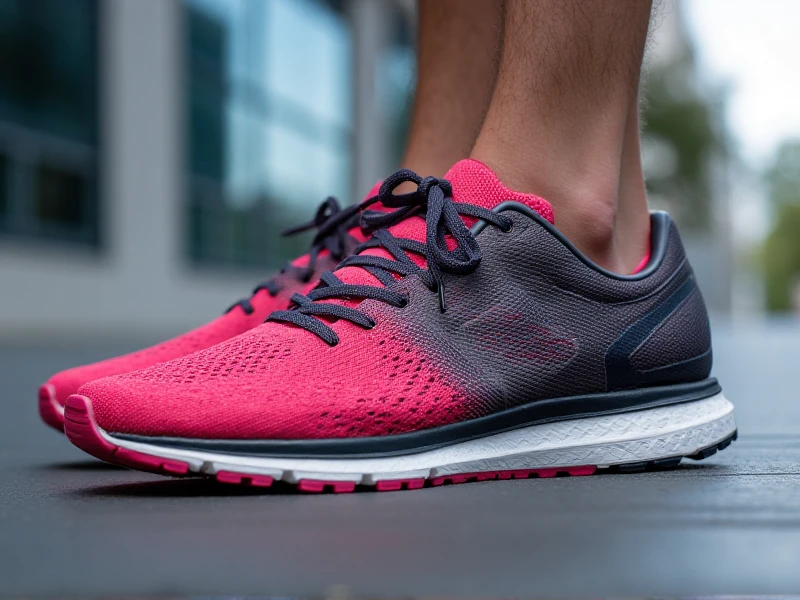
Best Women's Training Shoes: Ultimate Blend of Comfort and Performance
2025-06-10
Finding the perfect pair of training shoes isn't just about style; it's about empowering your workout from the ground up. The right women's training shoes provide the essential support, cushioning, and flexibility needed to tackle diverse gym activities, weightlifting, HIIT classes, or versatile cross-training routines. Let's explore what makes these shoes essential and how to pick your ideal pair.
Why Dedicated Women's Training Shoes Matter
Versatility is Key: Unlike running shoes designed primarily for forward motion, women's training shoes are built for multi-directional movement. Whether you’re doing lateral lunges, box jumps, rope slams, kettlebell swings, or quick agility drills, they offer the stability and traction crucial for safe, efficient movement in all planes.
Support Where You Need It: Strength training demands stable contact with the ground. Good cross training shoes for women feature a firmer, more stable midsole (compared to running shoes) and a flatter outsole ("less heel-to-toe drop"). This promotes better balance and force transfer during squats, deadlifts, and presses, helping you lift heavier and more safely. Enhanced arch support and a secure heel counter prevent unwanted foot movement, reducing injury risk.
Responsive Cushioning: HIIT, plyometrics, and dynamic movements need shoes that offer impact protection without feeling mushy. Training-specific cushioning systems provide responsive energy return – cushioning your landings while giving that springy feel to propel you into the next rep or jump.
Durability for Demanding Workouts: The reinforced uppers and durable outsoles of quality women’s gym shoes withstand the rigors of abrasive gym surfaces, repetitive movements, and potentially heavy weights dropping nearby. They are constructed to last.
Key Features Defining Top Women's Training Shoes
1. Stable, Supportive Base: Look for a firm midsole (commonly using compressed EVA foam or TPU materials like Nike’s React or Reebok’s Floatride Energy) for weight-bearing stability. A wider base under the heel and forefoot enhances balance.
2. Multi-Directional Traction: The outsole pattern is designed for grip during pushes, pulls, twists, and stops. Durable rubber is essential.
3. Secure, Breathable Fit: Uppers often combine supportive synthetic overlays with mesh for ventilation and lockdown. A padded collar and tongue enhance ankle comfort. A snug, but never tight, midfoot fit is vital.
4. Appropriate Flexibility: While stable, good training shoes still need flex under the forefoot for sprints, jumps, and dynamic movements while maintaining stability in the heel and arch area.
5. Lightweight Construction: Minimizing weight helps maintain agility and speed during circuit training and cardio bursts.
Choosing Your Perfect Pair: What to Consider
Your Primary Workouts: Are you primarily lifting heavy? Consider a shoe with a very low drop and stable base like the Nike Metcon or Reebok Nano series. More HIIT and cardio-focused? Look for balanced cushioning like the Joyfeel Lightweight Trainers or Under Armour Project Rock series for a mix of comfort and durability.
Foot Type & Comfort: Consider your arch height (high, normal, low) and any pronation tendencies. Many brands offer width options. Try shoes on in the afternoon when feet are slightly swollen. Wear the socks you train in.
Fit Matters: Your heel should be locked down snugly without slipping. You should be able to wiggle your toes comfortably. Ensure a secure fit across the midfoot. There should be about a thumb's width of space between your longest toe and the end of the shoe. Always try them on before buying if possible!
Popular and Reliable Options
Leading athletic brands consistently innovate in the women's training shoe space. Models like the Joyfeel Lightweight Trainers, Nike Metcon, Reebok Nano, Nike Free Metcon, Under Armour HOVR Rise, Under Armour Project Rock, and adidas Dropset Trainer are renowned for performance, durability, and style. Each offers unique blends of stability, cushioning, and flexibility suited to slightly different training niches.
Maximizing Your Investment
Rotate Shoes: If you train intensely multiple days per week, rotating two pairs extends the lifespan of both.
Let Them Air Out: Avoid keeping sweaty shoes in a sealed bag; allow them to dry naturally inside and out to prevent odor and material breakdown.
Know When to Replace: Listen to your feet! Persistent aches after familiar workouts, visible midsole compression, or worn-down treads are clear signals it's time for a new pair, typically after 6-12 months of regular use.
Conclusion
Investing in the right pair of women's training shoes is an investment in your performance, comfort, and safety. By understanding your training needs, foot mechanics, and the key features that define quality gym shoes, you can confidently select footwear that empowers every lift, jump, lunge, and sprint. Don't let the wrong shoes hinder your progress – experience the difference dedicated training shoes make. Explore the wide selection available today and step into your most productive workouts yet!
CATEGORYS: